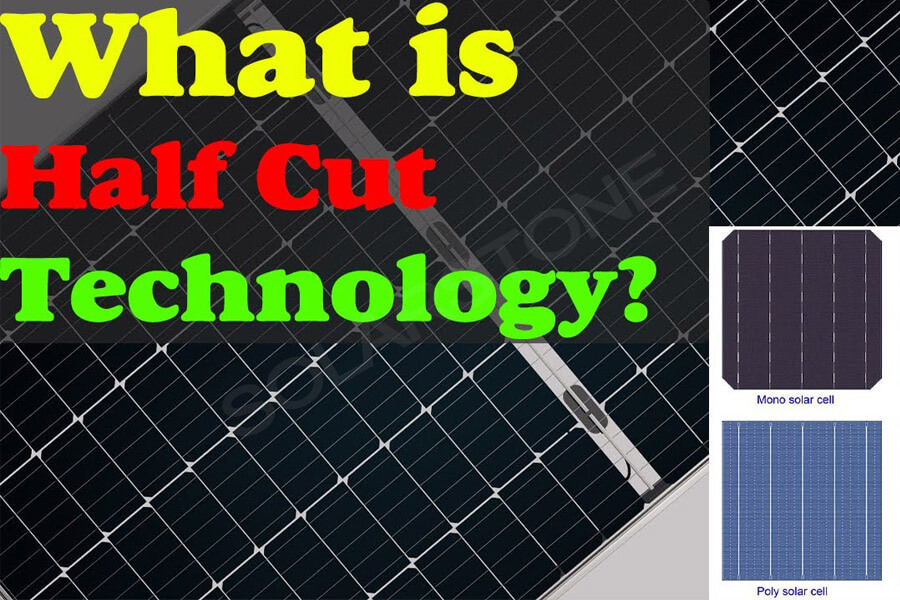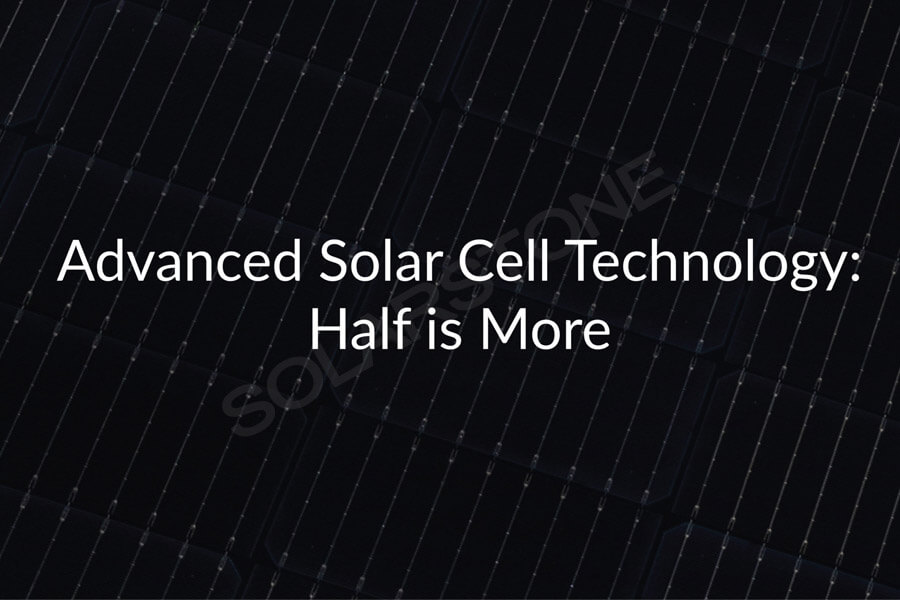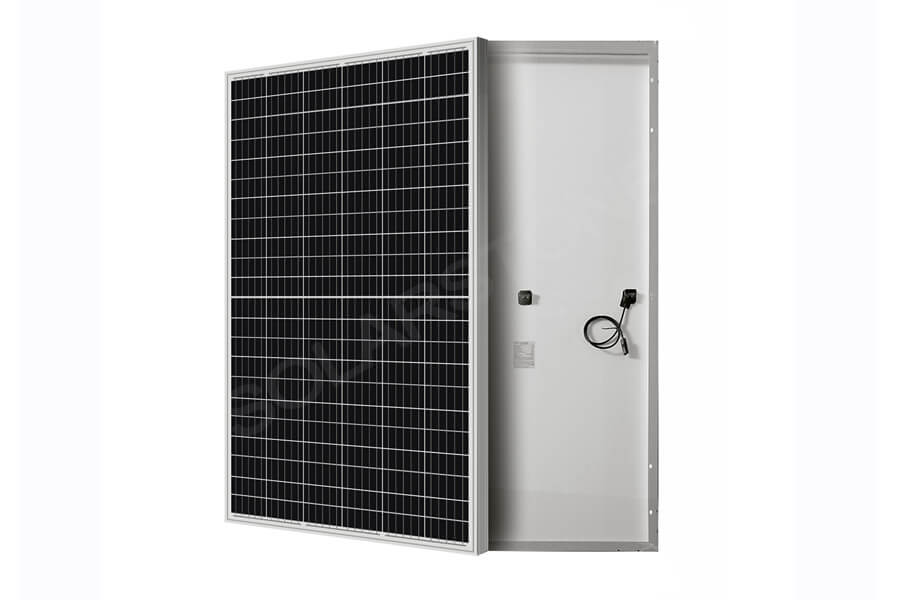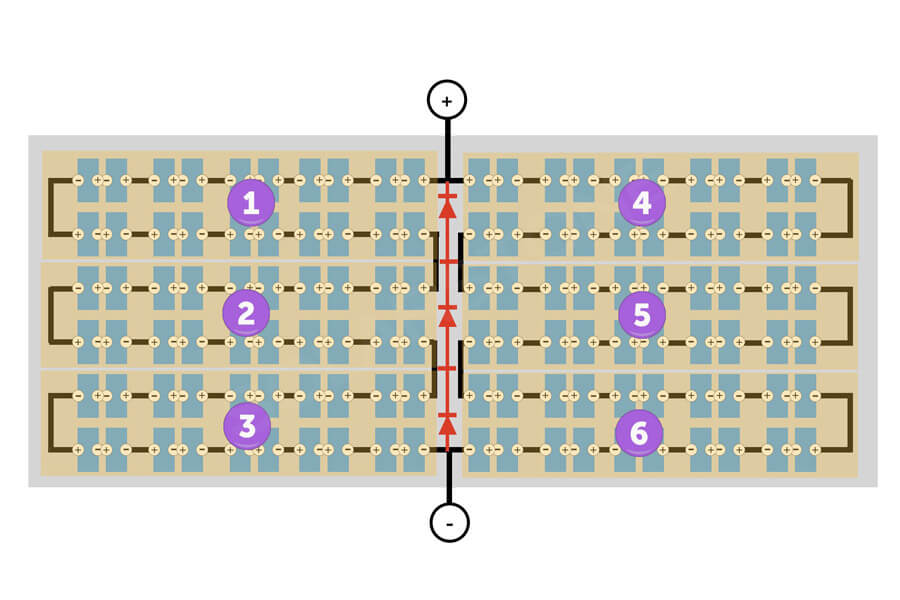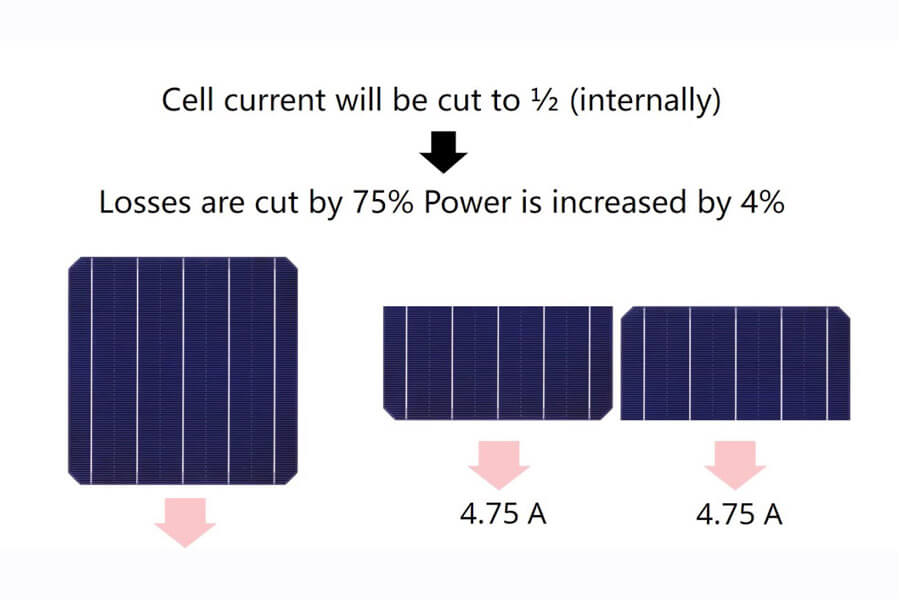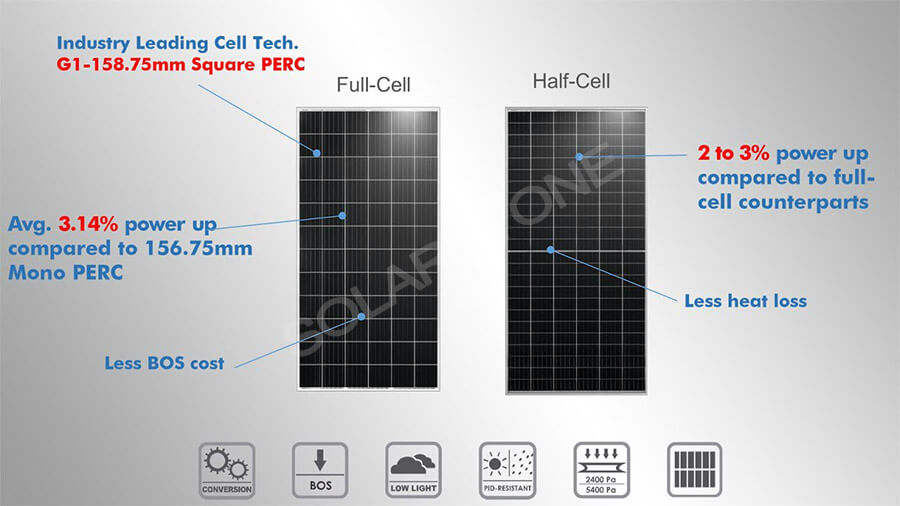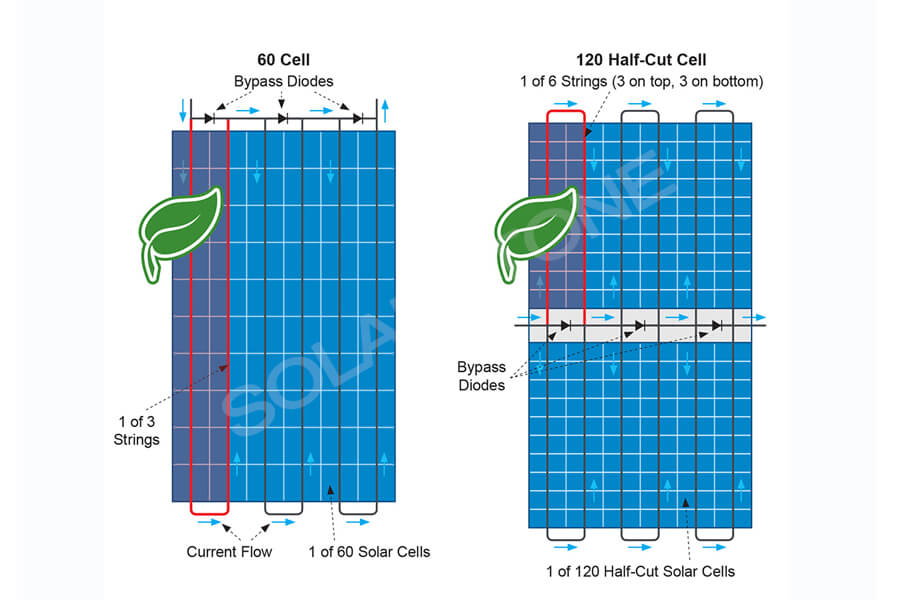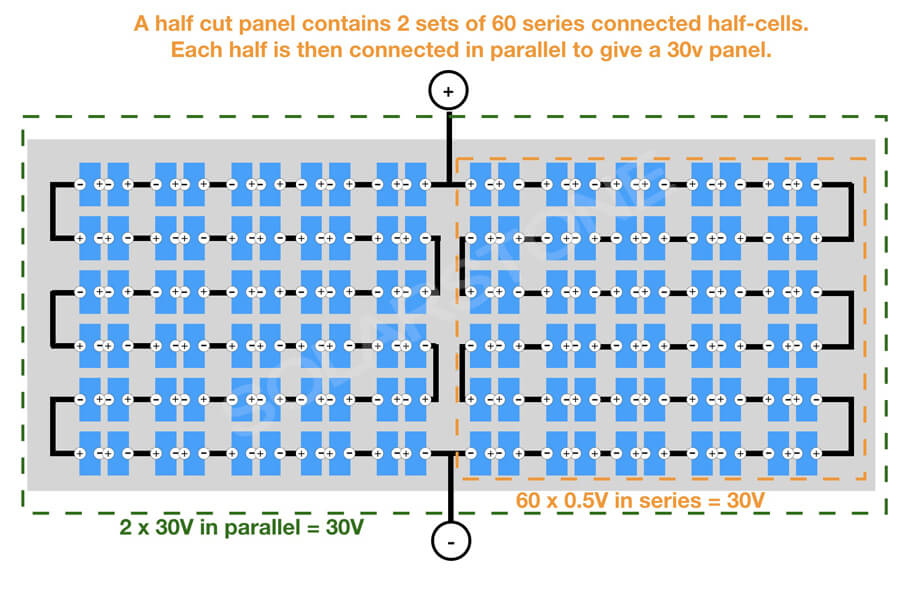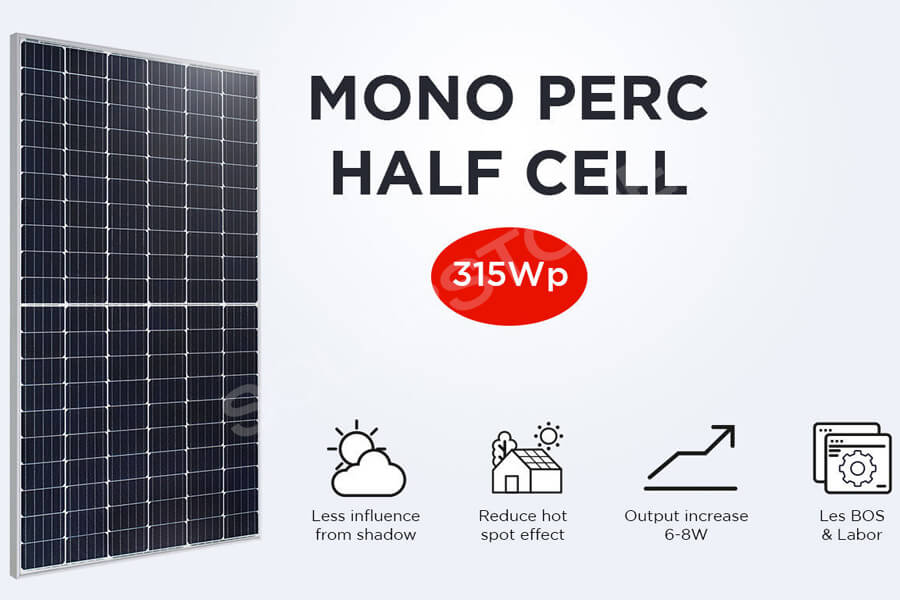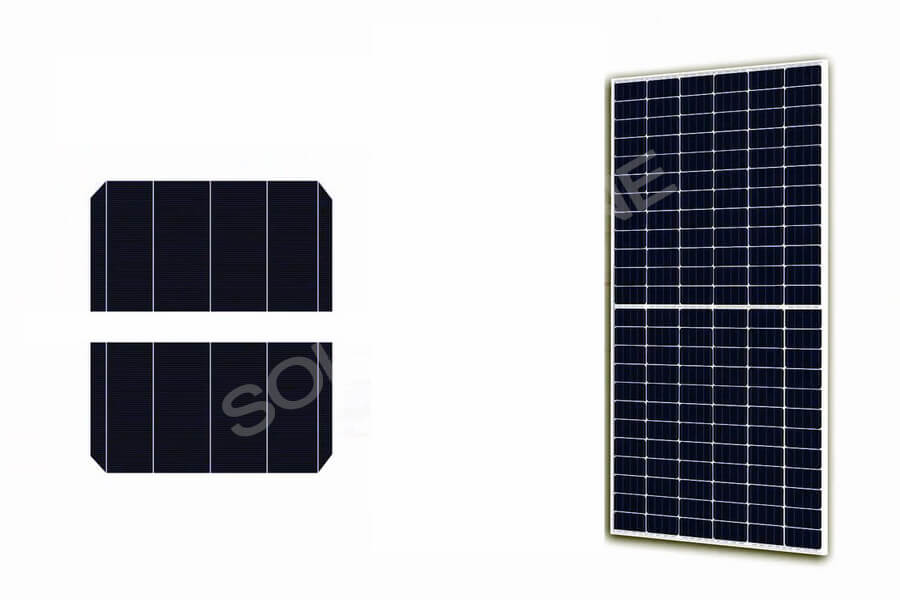Compared with the whole solar cell, the trend of half solar cell is obvious. The most popular explanation is that the current of half solar cell is only half of the original, so the power loss is low.
However, the advantage of half-cell technology is far more than power loss. This article will use the most popular explanation to tell you why half solar cell technology will replace the whole solar cell technology in the future.
1. Introduction to half solar cell
For half cell technology, they actually cut an ordinary solar cell in half. Instead of having 60 or 72 solar cells as common photovoltaic modules, it becomes 120 or 144 half solar cells, but maintains the same design and size as conventional photovoltaic modules.
Half solar cell technology generally adopts laser cutting method. The standard solar cell is cut into two half solar cells in the direction perpendicular to the main grid line of the solar cell, and then welded in series.
Like conventional photovoltaic modules, half solar cell packaging is also packaged with tempered glass, EVA and backplane. Conventional solar panels usually contain 60 0.5-0.6V solar cells in series.
The voltage is increased in series, so the working voltage of the photovoltaic module with 60 cells is 30-35v. If half solar cells are connected together as in standard photovoltaic modules, they will produce half the current and twice the voltage without changing the resistance.
In order to ensure that the overall output voltage and current of conventional photovoltaic modules are consistent, in the plate design, half solar cell photovoltaic modules generally adopt series-parallel structure design, which is equivalent to two small photovoltaic modules connected in parallel.
The open-circuit voltage of a half solar cell is the same as that of a whole solar cell, and the number of half solar cells has doubled. After being divided into two parts, the number of solar cells in each part is the same as that of the photovoltaic module of the whole solar cell, and the voltage of the two parts in parallel is the same as that of each part alone, Therefore, the total output voltage does not change relative to the whole solar cell.
The half solar cell is only half the size of the conventional solar cell, so the current of each solar cell is only half of that of the conventional solar cell. The upper and lower parts are designed in parallel, and the output current is restored to the current value of the whole solar cell.
The resistance of half solar cell is only half of that of the whole solar cell, so the resistance of each part in parallel is only half of that of the photovoltaic module of the whole solar cell. When the two parts with only half resistance are connected in parallel, the total loop resistance is only 1 / 4 of the whole resistance.
The connection design of the junction box is also different due to the change of plate type design. Generally, three split junction box is used.
2. Advantages of half solar cell design
Lower package loss
As mentioned above, due to the reduction of internal current and line resistance, the internal loss consumed in the internal circuit is reduced, and the power loss is directly proportional to the current. Half of the current and quarter of the resistance enables the photovoltaic module of half a solar cell to reduce the power loss by 4 times, and the corresponding output power and power generation are increased.
At the same time, due to the reduction of internal loss, the working temperature of the photovoltaic module and junction box also decreases. Under the outdoor working state of the photovoltaic module, the temperature of the photovoltaic module of half solar cell is about 1.6 ℃ lower than that of the photovoltaic module of the conventional whole solar cell. The lower temperature makes the photovoltaic module has higher photoelectric conversion efficiency.
Even if the two parts are not connected in parallel, but all half solar cells are connected to work as a standard solar panel, the current is only half, but the resistance is the same, and the power consumption is only 1 / 4.
Shadow tolerance reduces the risk of hot spots
The half PV module is better resistant to the influence of shadow than the standard PV module.
The half photovoltaic module does not have three solar cell strings like the standard photovoltaic module, but has six solar cell strings, making it a six-string panel.
Although a small part of the shadow (leaves, bird droppings, etc.) on the photovoltaic module will invalidate the whole solar cell string, because of the design of the bypass diode, the string will not affect other solar cell strings, reducing the impact of the shadow.
6 independent solar cell strings with 3 bypass diodes provide better local shadow tolerance. Even if half of the photovoltaic module is shaded, the other half can still work.
Low current reduces hot spot temperature
Half solar cells distribute internal current in the system and improve its performance, life and shadow tolerance.
When a solar cell of a solar cell string in the photovoltaic module is shielded, the solar cell will form a hot spot in the circuit, and the continuous high temperature may damage the photovoltaic module. Since the number of solar cell strings of half photovoltaic modules is twice that of the original, which means that the heat at the hot spot is only half, and the lower heat causes less damage to the photovoltaic modules, it can improve the ability to resist hot spot damage and improve the service life of photovoltaic modules.
Shadow tolerance reduces power loss
In a photovoltaic array, many photovoltaic modules are generally connected in series, and then connected in series and parallel with other sub-modules. The current flows into and out of each photovoltaic module in series in the same substring.
For the traditional photovoltaic module panel design, once a photovoltaic module has power loss due to various reasons of shadow, it will affect all photovoltaic modules of the substring. In the half photovoltaic module in the figure above, the bypass diode limits the power loss of the shaded part rather than the whole photovoltaic module.
It creates an alternative path for the current to flow in the non shaded part, avoids the current from passing through the shaded part, reduces the influence of the shadow and improves its performance.
3. The future of half solar cell technology
The use of half solar cells can provide great advantages and improve performance under shadow conditions. It is of great significance to improve the overall photovoltaic power generation of buildings that are vulnerable to other building obstacles.
The half solar cell can increase power generation, but its system design is similar to that of the whole PV module, without increasing installation cost, ensuring lower LCOE. The improvement of laser cutting technology makes the cutting defects of half solar cell almost negligible.
With the popularity of large photovoltaic modules and large silicon wafers, the trend of half or even one of the three solar cells is becoming more and more obvious. According to the prediction of relevant industry institutions, the market share of half photovoltaic modules is expected to exceed 50% in the next three years.


